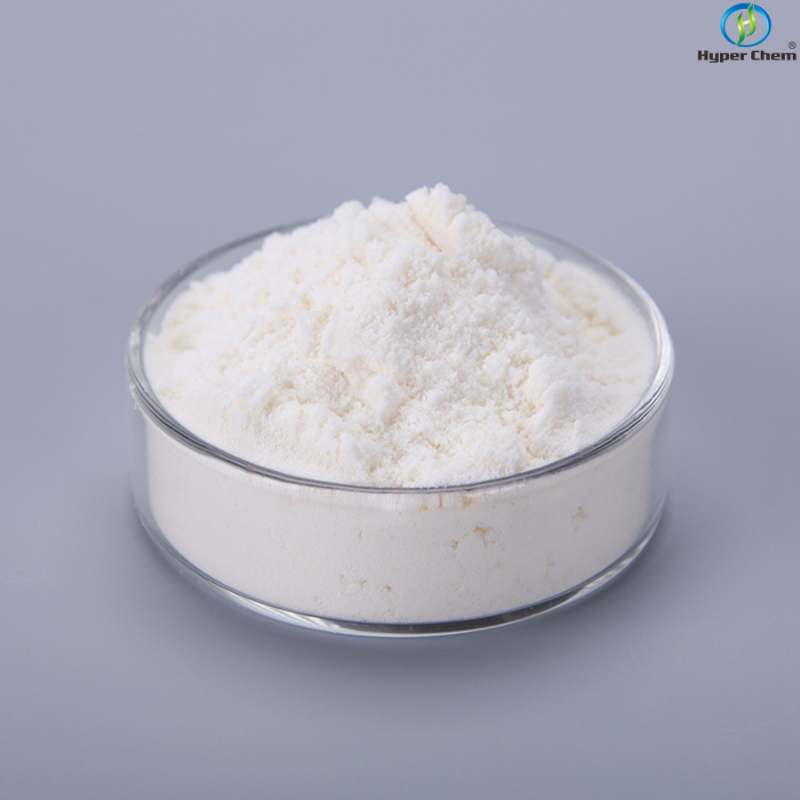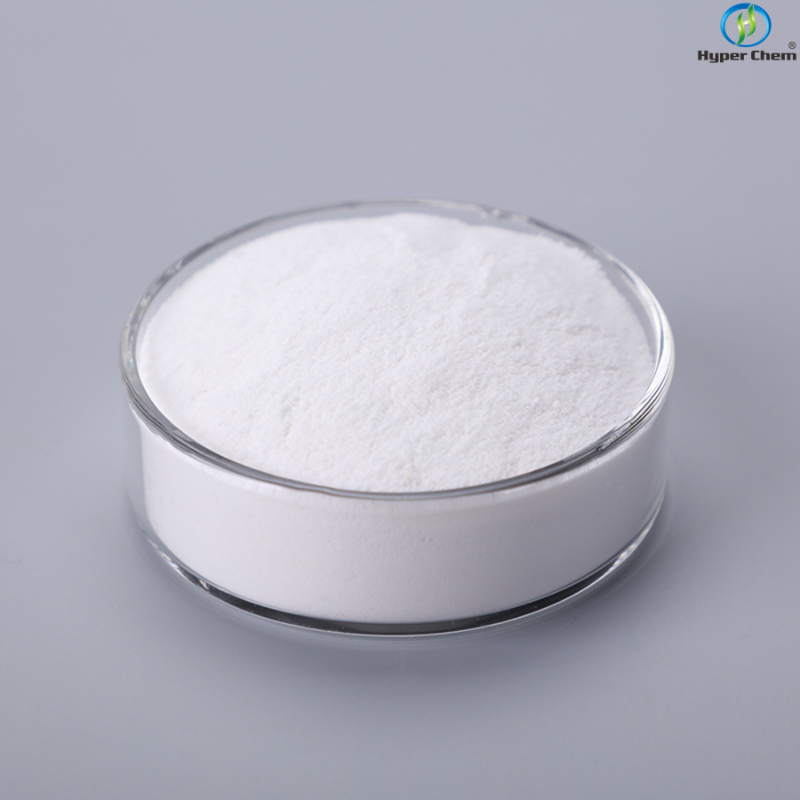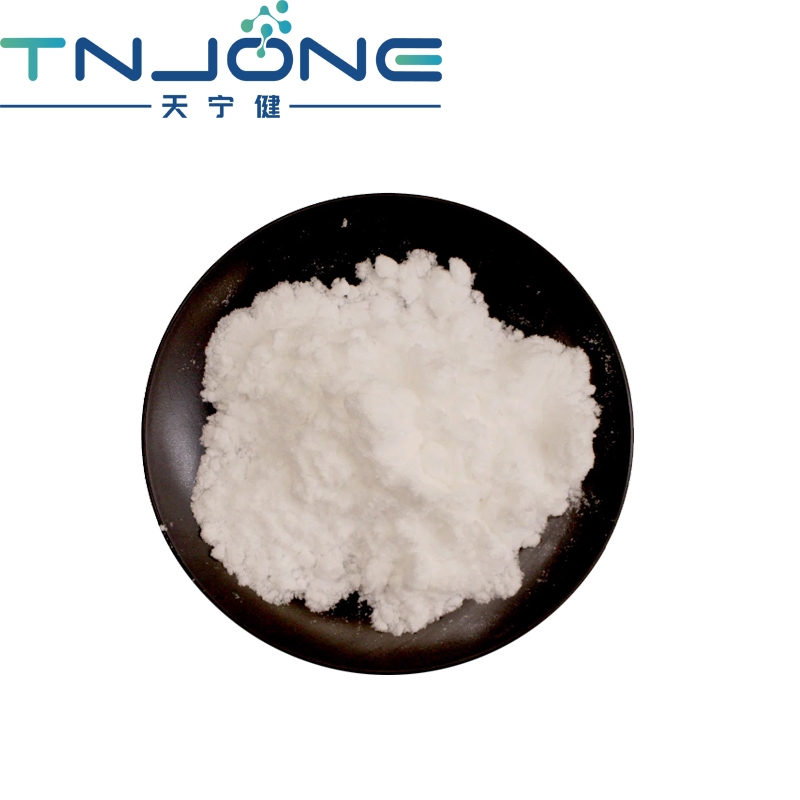-
Categories
-
Pharmaceutical Intermediates
-
Active Pharmaceutical Ingredients
-
Food Additives
- Industrial Coatings
- Agrochemicals
- Dyes and Pigments
- Surfactant
- Flavors and Fragrances
- Chemical Reagents
- Catalyst and Auxiliary
- Natural Products
- Inorganic Chemistry
-
Organic Chemistry
-
Biochemical Engineering
- Analytical Chemistry
-
Cosmetic Ingredient
- Water Treatment Chemical
-
Pharmaceutical Intermediates
Promotion
ECHEMI Mall
Wholesale
Weekly Price
Exhibition
News
-
Trade Service
February 8, 2022 / eMedClub News / -- Biotechnology company CSL Behring recently announced positive long-term results from the Phase 3 HOPE-B clinical trial evaluating the AAV5-based gene therapy drug etranacogene dezaparvovec (EtranaDez) Subjects experienced stable and durable increases in mean factor IX (FIX) activity and hemostatic protection at 18 months
.
The data were presented at the 2022 European Association for Hemophilia and Related Disorders (EAHAD) annual meeting as part of the latest clinical trial results meeting
.
As early as June 24, 2020, uniQure and CSL Behring entered into a research and development license agreement worth $2 billion, granting CSL Behring exclusive global rights to the gene therapy etranacogene dezaparvovec (AMT-061) for the treatment of hemophilia
B.
Recommended reading: For $2 Billion to Sell Hemophilia B Gene Therapy, Is the Only Way Out for Small Biopharmaceuticals is M&A and Selling Products? Yimai Meng broke the news that hemophilia B (HB) is a kind of hemophilia caused by the lack of coagulation factor IX, accounting for about 15% of the number of hemophiliacs
.
Like hemophilia A, hemophilia B is a heritable disease that can be caused by a spontaneous genetic mutation in one-third of cases.
This type of hemophilia is as rare as hemophilia A.
four times
.
At present, the treatment of hemophilia B mainly supplements coagulation factors through blood transfusions multiple times a week.
Long-term blood transfusion brings many side effects and a great economic burden to patients
.
With the development of the concept of gene therapy and the development of therapy, gene therapy has received extensive attention as a potential therapy for one-time treatment, long-term or even life-long cure
.
Etranacogene dezaparvovec (also known as CSL222, formerly known as AMT-061) uses AAV5 as its delivery vehicle.
The AAV5 vector carries a Padua gene variant of factor IX (FIX-Padua), which produces a FIX protein that is more active than normal5 to 8 times
.
▲ FIX activity reaches near-normal levels after 52 weeks (Image source: uniQure) Preclinical and clinical data show that AAV5-based gene therapy may be clinically effective in up to 95% of hemophilia B patients with pre-existing AAV vector antibodies, Thus, there may be increased patient accessibility compared to other AAV gene therapy product candidates
.
Phase 3 pivotal study HOPE-B Follow-up data from the HOPE-B Phase 3 pivotal study of Etranacogene dezaparvovec, including 54 men with severe or moderately severe hemophilia B, were presented at the 2022 EAHAD Annual Meeting The study met its primary endpoint and is the largest Phase III clinical trial of a gene therapy for hemophilia B (HB) to date
.
Experimental results demonstrated a mean FIX activity of 36.
9 IU/dL and 39.
0 IU/dL after 6 and 18 months of single-dose Etranacogene dezaparvovec infusion
.
After a 6-month post-infusion run-in period, adjusted annualized bleeding rates (ABR) were reduced by 64% for all patients, and 77% for all FIX-treated patients over a 7-18 month period
.
In terms of safety, Etranacogene dezaparvovec was generally well tolerated and no treatment-related serious adverse events occurred
.
No FIX inhibition was reported and no correlation between safety and pre-existing NAb titers was observed
.
The pace of regulatory review has accelerated For the BLA application of Etranacogene dezaparvovec, CSL Behring has also communicated with the US FDA
.
The FDA said that information to support the durability of etranacogene dezaparvovec requires follow-up of patients for at least 52 weeks, but that the 52-week period needs to be calculated from when FIX levels in patients reach a steady state after dosing, not when etranacogene dezaparvovec is administered start
.
This feedback is based on the FDA's review of the statistical analysis program and was not discussed in light of clinical data
.
All patients in the HOPE-B pivotal study achieved steady-state levels of FIX activity after 26 weeks of etranacogene dezaparvovec administration
.
Therefore, a non-inferiority analysis of the bleeding event rate (ABR) at 78 weeks post-dose will be a key piece of the puzzle for CSL Behring's BLA submission in the first quarter of 2022
.
The clinical progress of hemophilia B gene therapy In addition to Etranacogene dezaparvovec, there are many companies around the world deploying hemophilia B gene therapy, including SPK-9001 from Pfizer and Spark, FLT180a from Freeline, and SB-FIX from Sangamo Therapeutics
.
Pfizer/Spark’s current Phase 3 drug candidate, SPK-9001, a gene therapy for hemophilia B, is enrolling 110 male patients aged 18-64
.
SPK-9001 consists of a bioengineered capsid AAV2 (Spark100) with liver-specific tropism, a liver-specific promoter and a codon-optimized FIX-Padua transgene
.
The current SPK-9001 has been optimized for the AAV vector, as well as the FIX gene carried
.
Sangamo's SB-FIX uses Sangamo's proprietary ZFN genome editing technology to insert a corrected copy of the F9 gene, which controls the production of FIX, into the DNA of liver cells
.
SB-FIX was designed to permanently and precisely integrate the F9 gene into DNA
.
SB-FIX is the first gene therapy using ZFN gene editing technology and is currently in Phase I clinical trials
.
FLT180a is an investigational gene therapy for hemophilia B.
It mainly uses the AAV gene vector to deliver the coagulation factor IX gene into the patient's hepatocytes, and promotes the body to produce coagulation factor IX, thereby achieving therapeutic effects
.
Currently, a Phase 1/2 clinical trial of FLT180a (NCT03369444) is enrolling patients with hemophilia B in the UK, and as of June 15, 2020, 10 patients have been treated
.
At present, most of the gene therapy products for hemophilia B are developed abroad, and China is still in the early stage of development in this field
.
In recent years, the field of gene therapy in China is gradually emerging
.
As a new field of medicine, it is profoundly changing the face of the pharmaceutical industry
.
On May 17, 2021, the CDE official website showed that the BBM-H901 injection independently developed by Shanghai Xinzhi Pharmaceutical Technology Co.
, Ltd.
(hereinafter referred to as "Xinzhi Pharmaceutical") has been approved for drug clinical trials, and the registration clinical trial will be officially launched.
Prevention of bleeding in adult male patients with hemophilia
B.
This is the first gene therapy drug for hemophilia AAV approved for registration in clinical trials in China, and the first gene therapy for rare diseases in China with systemic administration
.
Recommended reading: Heavy! Faith Pharma is applying for AAV gene therapy for hemophilia B, and the domestic gene therapy track is gradually openingYimai Meng broke the news that for hemophilia B, there are still a large number of therapies under development in the world that have not yet entered the clinical stage or are about to enter the clinical stage.
The gene therapy of adeno-associated virus (AAV) vector will continue to set off a boom, and we look forward to the early launch of such therapy, allowing patients to recover in one shot, and making gene therapy benefit mankind
.
References: 1.
https:// -gene-therapy-in-hemophilia-b-data-presented-at-eahad-2022/
.
The data were presented at the 2022 European Association for Hemophilia and Related Disorders (EAHAD) annual meeting as part of the latest clinical trial results meeting
.
As early as June 24, 2020, uniQure and CSL Behring entered into a research and development license agreement worth $2 billion, granting CSL Behring exclusive global rights to the gene therapy etranacogene dezaparvovec (AMT-061) for the treatment of hemophilia
B.
Recommended reading: For $2 Billion to Sell Hemophilia B Gene Therapy, Is the Only Way Out for Small Biopharmaceuticals is M&A and Selling Products? Yimai Meng broke the news that hemophilia B (HB) is a kind of hemophilia caused by the lack of coagulation factor IX, accounting for about 15% of the number of hemophiliacs
.
Like hemophilia A, hemophilia B is a heritable disease that can be caused by a spontaneous genetic mutation in one-third of cases.
This type of hemophilia is as rare as hemophilia A.
four times
.
At present, the treatment of hemophilia B mainly supplements coagulation factors through blood transfusions multiple times a week.
Long-term blood transfusion brings many side effects and a great economic burden to patients
.
With the development of the concept of gene therapy and the development of therapy, gene therapy has received extensive attention as a potential therapy for one-time treatment, long-term or even life-long cure
.
Etranacogene dezaparvovec (also known as CSL222, formerly known as AMT-061) uses AAV5 as its delivery vehicle.
The AAV5 vector carries a Padua gene variant of factor IX (FIX-Padua), which produces a FIX protein that is more active than normal5 to 8 times
.
▲ FIX activity reaches near-normal levels after 52 weeks (Image source: uniQure) Preclinical and clinical data show that AAV5-based gene therapy may be clinically effective in up to 95% of hemophilia B patients with pre-existing AAV vector antibodies, Thus, there may be increased patient accessibility compared to other AAV gene therapy product candidates
.
Phase 3 pivotal study HOPE-B Follow-up data from the HOPE-B Phase 3 pivotal study of Etranacogene dezaparvovec, including 54 men with severe or moderately severe hemophilia B, were presented at the 2022 EAHAD Annual Meeting The study met its primary endpoint and is the largest Phase III clinical trial of a gene therapy for hemophilia B (HB) to date
.
Experimental results demonstrated a mean FIX activity of 36.
9 IU/dL and 39.
0 IU/dL after 6 and 18 months of single-dose Etranacogene dezaparvovec infusion
.
After a 6-month post-infusion run-in period, adjusted annualized bleeding rates (ABR) were reduced by 64% for all patients, and 77% for all FIX-treated patients over a 7-18 month period
.
In terms of safety, Etranacogene dezaparvovec was generally well tolerated and no treatment-related serious adverse events occurred
.
No FIX inhibition was reported and no correlation between safety and pre-existing NAb titers was observed
.
The pace of regulatory review has accelerated For the BLA application of Etranacogene dezaparvovec, CSL Behring has also communicated with the US FDA
.
The FDA said that information to support the durability of etranacogene dezaparvovec requires follow-up of patients for at least 52 weeks, but that the 52-week period needs to be calculated from when FIX levels in patients reach a steady state after dosing, not when etranacogene dezaparvovec is administered start
.
This feedback is based on the FDA's review of the statistical analysis program and was not discussed in light of clinical data
.
All patients in the HOPE-B pivotal study achieved steady-state levels of FIX activity after 26 weeks of etranacogene dezaparvovec administration
.
Therefore, a non-inferiority analysis of the bleeding event rate (ABR) at 78 weeks post-dose will be a key piece of the puzzle for CSL Behring's BLA submission in the first quarter of 2022
.
The clinical progress of hemophilia B gene therapy In addition to Etranacogene dezaparvovec, there are many companies around the world deploying hemophilia B gene therapy, including SPK-9001 from Pfizer and Spark, FLT180a from Freeline, and SB-FIX from Sangamo Therapeutics
.
Pfizer/Spark’s current Phase 3 drug candidate, SPK-9001, a gene therapy for hemophilia B, is enrolling 110 male patients aged 18-64
.
SPK-9001 consists of a bioengineered capsid AAV2 (Spark100) with liver-specific tropism, a liver-specific promoter and a codon-optimized FIX-Padua transgene
.
The current SPK-9001 has been optimized for the AAV vector, as well as the FIX gene carried
.
Sangamo's SB-FIX uses Sangamo's proprietary ZFN genome editing technology to insert a corrected copy of the F9 gene, which controls the production of FIX, into the DNA of liver cells
.
SB-FIX was designed to permanently and precisely integrate the F9 gene into DNA
.
SB-FIX is the first gene therapy using ZFN gene editing technology and is currently in Phase I clinical trials
.
FLT180a is an investigational gene therapy for hemophilia B.
It mainly uses the AAV gene vector to deliver the coagulation factor IX gene into the patient's hepatocytes, and promotes the body to produce coagulation factor IX, thereby achieving therapeutic effects
.
Currently, a Phase 1/2 clinical trial of FLT180a (NCT03369444) is enrolling patients with hemophilia B in the UK, and as of June 15, 2020, 10 patients have been treated
.
At present, most of the gene therapy products for hemophilia B are developed abroad, and China is still in the early stage of development in this field
.
In recent years, the field of gene therapy in China is gradually emerging
.
As a new field of medicine, it is profoundly changing the face of the pharmaceutical industry
.
On May 17, 2021, the CDE official website showed that the BBM-H901 injection independently developed by Shanghai Xinzhi Pharmaceutical Technology Co.
, Ltd.
(hereinafter referred to as "Xinzhi Pharmaceutical") has been approved for drug clinical trials, and the registration clinical trial will be officially launched.
Prevention of bleeding in adult male patients with hemophilia
B.
This is the first gene therapy drug for hemophilia AAV approved for registration in clinical trials in China, and the first gene therapy for rare diseases in China with systemic administration
.
Recommended reading: Heavy! Faith Pharma is applying for AAV gene therapy for hemophilia B, and the domestic gene therapy track is gradually openingYimai Meng broke the news that for hemophilia B, there are still a large number of therapies under development in the world that have not yet entered the clinical stage or are about to enter the clinical stage.
The gene therapy of adeno-associated virus (AAV) vector will continue to set off a boom, and we look forward to the early launch of such therapy, allowing patients to recover in one shot, and making gene therapy benefit mankind
.
References: 1.
https:// -gene-therapy-in-hemophilia-b-data-presented-at-eahad-2022/







